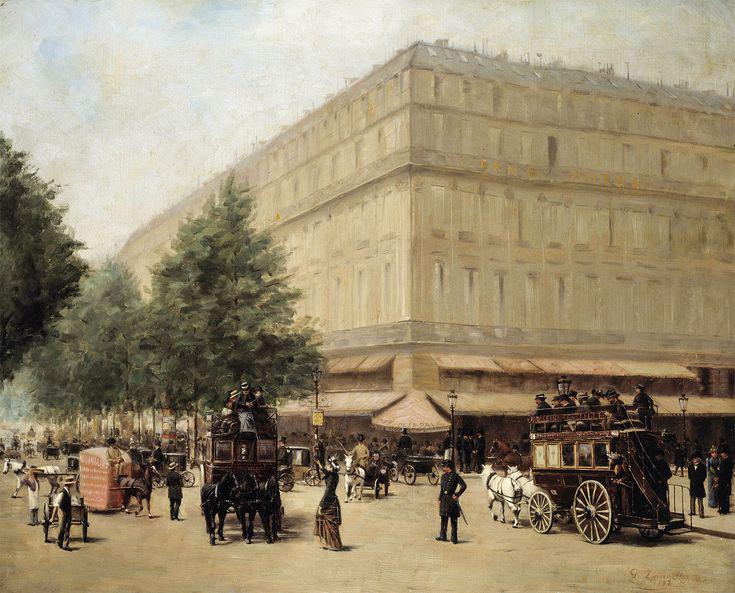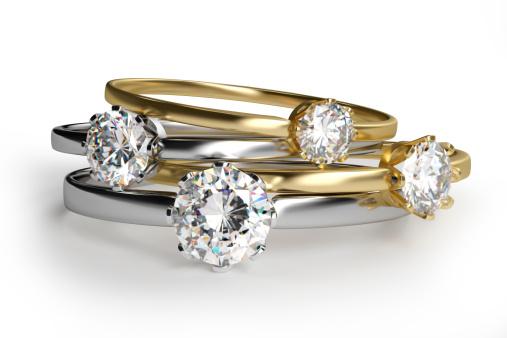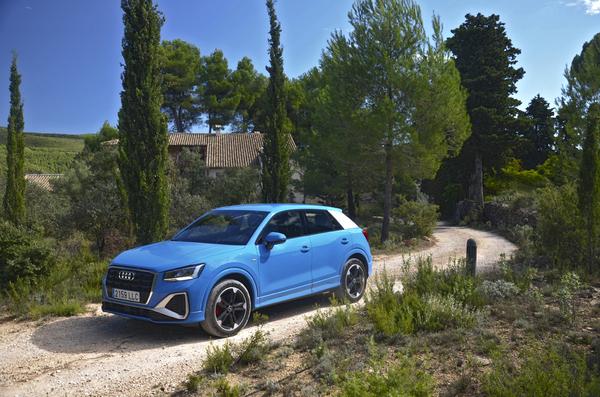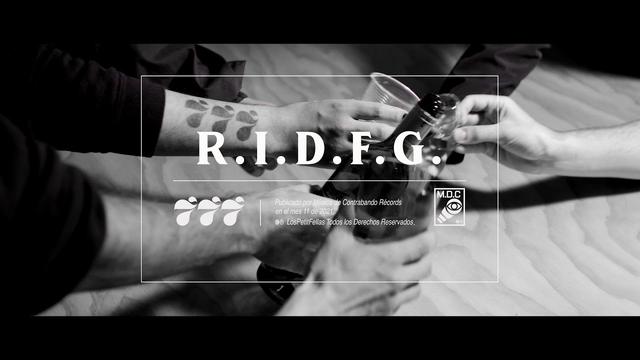The smell of smoke that permeated the streets was the first thing actress Sarah Bernhardt noticed on her return to Paris in 1871. Hundreds of buildings were in ruins from the bombardments of the Prussian army, its streets were strewn with barricades... Few could have imagined that this wounded Paris could become the prosperous city that impressed the world in 1914. But during this time, Paris would shine more than ever thanks to technological advances and vertiginous social changes that ended up transforming it.
Paris was used to change. The ambitious urban plan of Baron Haussmann had radically modified it during the Second Empire (1852-1870), demolishing the old neighborhoods with narrow streets and overcrowded buildings, to replace them with large avenues that gave way to light and favored the circulation of people and vehicles. In his eagerness to beautify and clean Paris, Haussmann began the installation of sewerage, lighting with gas lamps and the opening of green spaces – among his intentions was also to prevent barricades from being erected in its alleys, as happened in 1848 –.
One of the effects of these reforms was that the lower classes were displaced to the outskirts, because they could no longer afford the rents of the renovated buildings in the center.
When the writer Victor Hugo returned from an exile of nearly twenty years in 1870, he sadly found that his beloved medieval Paris had disappeared. But the biggest changes were yet to come. Stabilized the situation after the war with Prussia and the Commune, the city continued the work of Haussmann. Of course, with the technological advances that were revolutionizing the world.
To know more
The Eiffel Tower: the construction of a colossus
read article
The city of light
The first major advance was electricity. The installation of electric streetlights on the avenue de la Ópera was received with great emotion. The International Exhibition of 1881 was received with the electric illumination of the great boulevards, neon signs and the extensive system of pipes and garbage cans in front of each building, which would significantly improve the hygiene of Paris.
All this had as a consequence an improvement in the living conditions of its inhabitants, although all these advances reached the privileged sectors beforehand and little by little spread to the rest. Not only did the life expectancy of Parisians increase, until then below that of the rest of France, but also the enormous differences between residents of the best areas and those of the slums were reduced.
Thus, during the Belle Époque, Paris went from having 1.8 million inhabitants to 2.8. This spectacular growth was also due to the fact that the city was becoming more and more attractive to immigrants, who flocked from all corners of France. Something that would not have been possible without a growing and more powerful public transport network.
To know more
The sidewalk, a reinvention of the eighteenth century
read article
transport for all
In previous centuries, the humble classes lived as close as possible to their place of work, where they went on foot. But throughout the 19th century, the launch of a network of horse-drawn buses and trams had allowed them to settle in more remote places. The city's growth in size and population made clear the need to improve the quantity and quality of existing public transport. Technological advances came to satisfy this need. The electricity that illuminated the streets was applied to the means of transport: the first electric tramway was inaugurated in 1898. Taxis began to tour Paris in 1905, and from 417 in 1906 they increased to 7,000 in 1914; the working classes had to make do with motorized omnibuses, which were inaugurated in 1906.
Part of the Parisians received these new means of transport with emotion: they were fast and avoided the annoying and smelly accumulations of horse feces. Another part, however, was concerned about the effects that what they considered «high vehicle speeds» could have on human beings, and was terrified by the accidents and run overs they caused. Despite this, in the twilight of the Belle Époque, Paris was a city on wheels: the horse-drawn omnibus made its last run in 1913, the same year that the municipal cleaning service began using trucks.
But if a means of transport generated excitement, fear and doubts, it was the subway: should it be powered by electricity, which still caused misgivings, or by steam, which could suffocate passengers? Would Paris support the works? Parisians feared the possible damage caused by these works, even more so if part of the metro was built on the ground. In the end, an electric and mostly underground metro was chosen, which was inaugurated on July 19, 1900. Despite the inconvenience of the works, the enthusiasm and expectation for the opening of the metro were enormous.

To know more
Jules Verne, the visionary writer
read article
Thousands of people attended the opening ceremony with the feeling that they were stepping into the future; the newspaper El Radical hailed its opening "as an agent of moral progress." But the terrible accident that took place in 1903 put an end to many of these runaway illusions: a fire claimed the lives of 84 people. The conservative newspaper La Croix claimed that it had been divine punishment for the city's impertinent pride. However, over time the fear faded and the subway became the protagonist of everyday life: in 1914 it transported 500 million passengers a year.
But the metro didn't just take Parisians to their jobs. Paris had become a city that never slept: after the working day came leisure time, which lasted throughout the night. The improvement in wages and the stabilization of hours allowed workers to have more money and time to spend it; entrepreneurs rushed to meet this demand.
A wide range of leisure
The new forms of leisure were also led by technological advances. And if any of them captured the imagination of contemporaries, it was the cinema. The Lumière brothers took advantage of the situation and began charging admission to screenings of their films at the Grand Café in 1895. But the initial excitement soon wore off: once people got used to moving pictures, they found it boring to watch over and over again. again the same short and simple recordings. The change came from the hand of filmmakers like Georges Méliès, who began to use the new technology to tell stories. Cinema as we know it was born. The business opportunity was clear for people like Léon Gaumont, who opened in 1911 a huge 3,400-seat cinema at affordable prices that turned the seventh art into a spectacle within the reach of all budgets.
On the other hand, the Belle Époque was the golden age of the cabaret, with the opening of Le Chat Noir in 1881 and the Moulin Rouge in 1889. La Goulue and Jane Avril, can-can dancers from this famous venue, achieved great fame both within and outside of Paris. Music venues and taverns were packed with patrons night after night; and for those who preferred a more cultural leisure there were the museums: the wax museum, inaugurated in 1882, was one of the favorites of the Parisians. So much offer could be a bit overwhelming. So part of the population preferred to enjoy their free time in city parks or on excursions to the countryside.
But if many Parisians took advantage of their free time to escape from the city, more and more foreigners came to visit it. International exhibitions became the main tourist attraction in Paris: if the 1889 exhibition, in which the Eiffel Tower was inaugurated, attracted 23 million people, the 1900 exhibition attracted 48. To respond to such demand, hotels such as the Ritz, and the main train stations were expanded between exhibition and exhibition. Paris increased its fame as a tourist destination.
To know more
The Lumière brothers and the birth of cinema
read article
The fever of consumerism
If mass entertainment dominated leisure, the same thing was beginning to happen in consumption. Among the main attractions of Paris, the shopping centers began to stand out, which shone with their own light. Tourists, usually belonging to the privileged classes, could not fail to visit places like the Lafayette galleries.
But in 1895, Georges Dufayel opened the Dufayel galleries in one of the slums of Paris, focused on a working class public: his motto was "sell cheap to sell more". Using techniques such as installment sales and investing in advertising that encouraged workers to consume, these galleries became one of the most successful businesses in the city. Shopping there was a form of leisure: you could hang out in its spacious spaces, go to concerts, watch movies in its cinema and even get X-rays – technology considered fascinating at the time – on Tuesdays and Saturdays. And, of course, buying a whole series of articles that imitated the luxury that was previously exclusive to the bourgeoisie.
The improvement of the conditions of the less privileged was evident in many aspects. Education was one of them: thanks to the law of 1882, which made primary education compulsory, illiteracy had been greatly reduced: in Paris the maximum rate was less than 20 per cent in the slums. The vast majority of Parisians knew how to read, an essential requirement for the spectacular development of the press at this stage.
But the press not only improved the cultural level of its readers, but also transmitted false news and generated collective insecurities. To sell as much as possible, the newspapers truffled their pages of events that Parisians read with relish. The prominence of the morbid news led readers to think that Paris was an increasingly violent and dangerous city, a feeling that was also contributed by the fact that the police were more effective in solving crimes: in 1902 they had adopted the technique of fingerprints. The press also fed the feeling that French society was degenerating. Accounts of crime and scandal convinced many that new social attitudes and technology were destroying traditional society. The anonymity of the big city, the loss of power of traditional referents, such as the parish priest, and the spread of education made the new generations feel freer. Thus, in Paris new currents such as feminism gained strength and behaviors that did not fit the norm, such as homosexuality, became more visible.
To know more
The vibrator, a treatment for hysteria
read article
limited tolerance
Homosexuals took advantage of the greater doses of freedom offered by the Belle Époque. The wide green areas of the city and the many nightclubs became courtship places for them. There was little the authorities could do to repress what a large part of society considered an aberration. When the owner of a place on rue Monge, in the heart of Paris, denounced to the police that his tenants had turned it into a bar with a homosexual clientele, the police replied that if he had all the papers in order, they could do nothing to stop him. close it. Although there was a limit to what Parisian society tolerated in public. In 1907, the actresses Colette and Mathilde de Morny so scandalized the spectators of the Moulin Rouge by starring in a lesbian scene that the police had to intervene to calm the situation. The play, Dreams of Egypt, was banned, and the women, who were lovers, were forced to stop living together.
Scared or excited, it was clear to Parisians that change had become the norm. The semi-destroyed city of 1871 had little to do with the one that bustled with activity in 1914, with its streets full of vehicles, its parks, cinemas and shopping centers full of people, its exhibition halls and museums showing the art of the new century. Few could have foreseen that darkness would once again hover over the city that in 1914 was the city of all lights.
To know more
Brief history of the Belle Époque. A. Campos Posada. Nowtilus, Madrid, 2017.
From Paris. Chronicles and essays. JM Eça de Queirós. Cliff, Barcelona, 2010.




